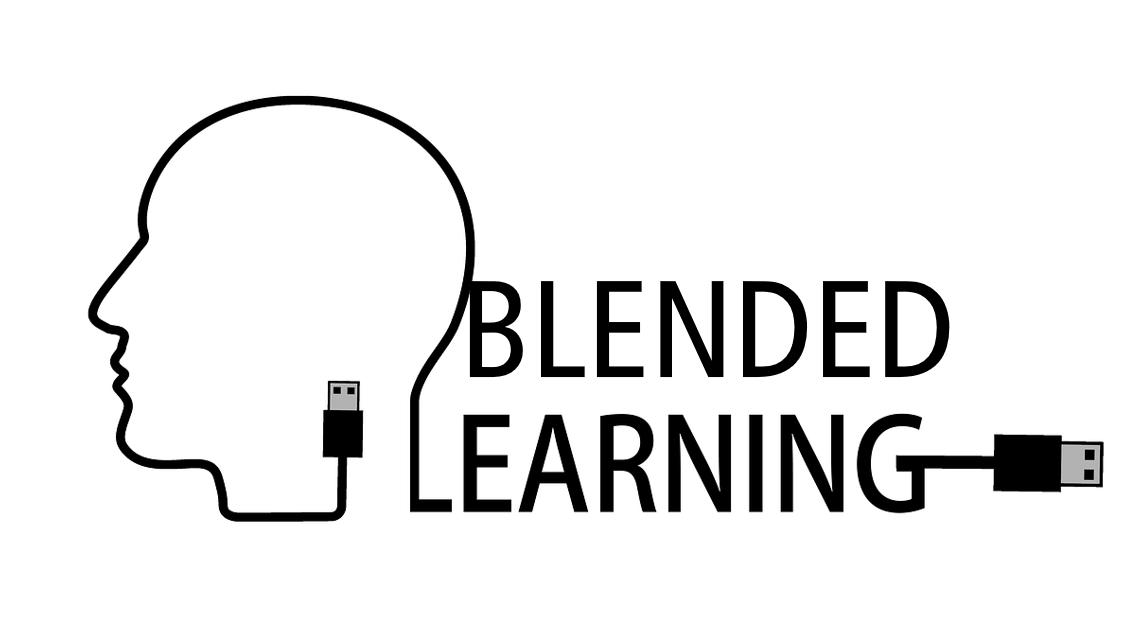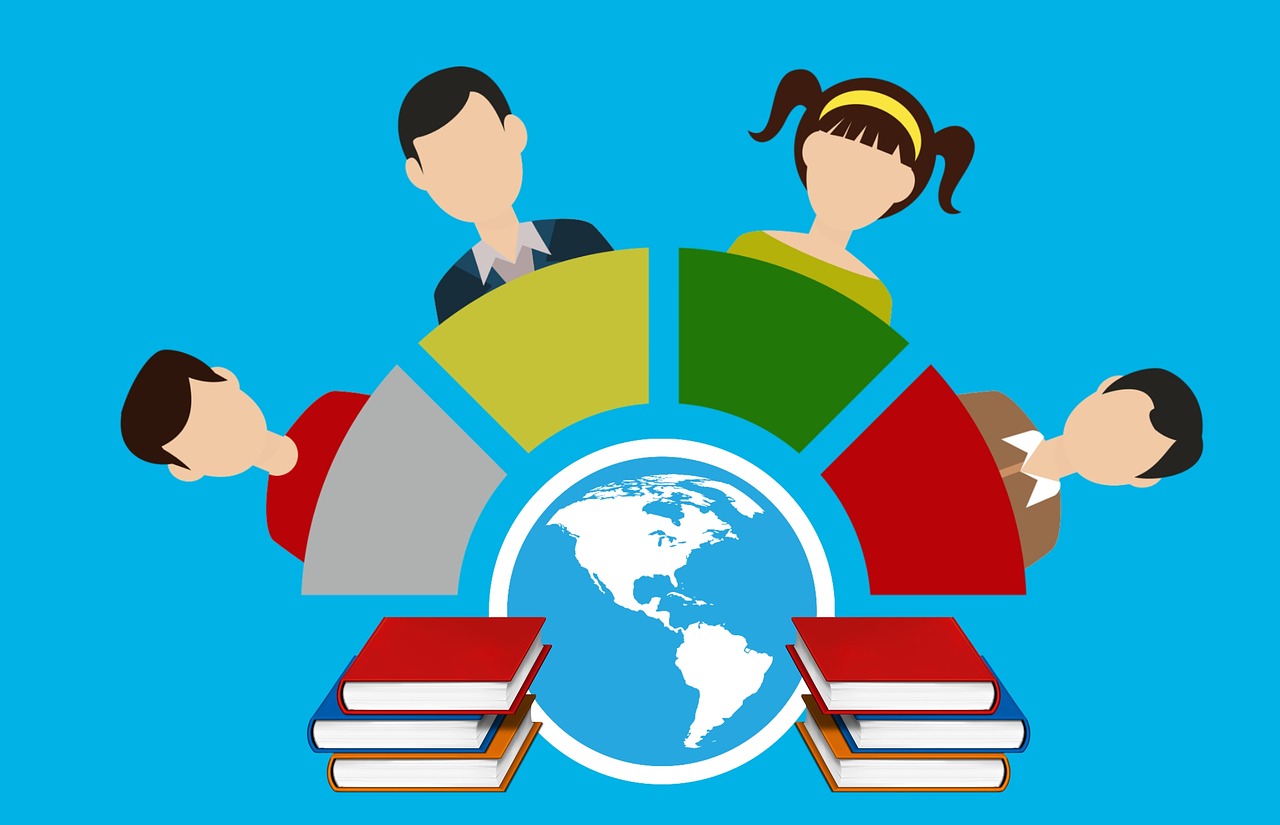In our previous blog posts, you’ve already known about personalized learning and microlearning. In conjunction with these two significant eLearning trends, blended learning is also a buzzword which is increasingly used in education and training. There are many alternative terms that educators can use to replace for blended learning. “Hybrid learning”, “mixed learning, “technology-mediated instruction”, “integrative learning”, or “flipped classroom”, just to name a few. However, whatever one chooses to call it, the combination of offline and online learning in a way that one complimenting the other is a big learning trend that is going to grow.
 Image by Gerd Altmann from Pixabay
Image by Gerd Altmann from Pixabay
In this today’s blog post, you can find an adequate definition of blended learning, its typical model, and its influences on teacher roles.
Blended Learning Definition
As you know, traditional classroom method focuses on teacher-centered education. Meanwhile, personalized learning emphasizes the central role of learners. Besides, the remarkable development of technology in recent decades has brought a new learning trend- eLearning, which slowly replaces the traditional methods of teaching. Blended learning is lying somehow among those three concepts.
Until now, no universal definition of blended learning exists because it is highly context-dependent. However, there is one thing for sure: blended learning is the integration of digital tools, techniques, and materials (eLearning elements); activities in face-to-face class (traditional teaching methodology); and independent study (personalized learning).

Image by mohamed Hassan from Pixabay
Blended Learning Model
Known as a mix of physical and digital learning, blended learning helps to fill in the gap between brick-and-mortar schools (traditional education) and virtual classrooms (eLearning). It allows learners to enjoy the best of both worlds. Based on the above definition, a typical blended learning model includes three essential components, which are:
- Online learning materials (assigned to learners by a facilitator)
- In-person classroom activities (guided by that facilitator)
- Independent study time (using online learning materials assigned by that facilitator)
Blended Learning Environment
Together with physical classes, blended learning occurs through online learning management systems (LMS) like Moodle, Canvas, or BlackBoard. These digital platforms allow learners to gain knowledge in a virtual learning environment. They can also interact with their facilitator and other students through webinars. Meanwhile, facilitators can update contents or online materials regularly in these platforms.

Image by Harish Sharma from Pixabay
A closer look at activities from learner’s and facilitator’s sides will offer you a comprehensive overview about a blended learning model:
From Learner’s Side
In a blended course, learners may enjoy both the freedom of eLearning and the opportunity to interact directly with their facilitator and classmates. In detail, learners will study by themselves online materials assigned by their facilitator. For example, they will watch videos, read materials, become a member of online studying community, complete assignments…in a virtual learning environment. In addition, they also come to class for joining in-person classroom activities.
From Facilitator’s Side
Meanwhile, facilitators are responsible for assigning online materials (videos, documents, assignments, online courses…) for learners to study at home. Then, they will facilitate in-classroom activities that learners can discuss, share their thoughts, ask questions, and interact directly with their facilitator and classmates. Facilitators will also guide different techniques and allow learners to practice those techniques immediately, then give them constructive feedback.
To learn about 4 common blended learning models, see this blog.
How does Blended Learning Redefine Teacher’s Roles?
In this article, you can see that “facilitator” is a word used to describe those are on duty to convey knowledge to learners. You may wonder why familiar words like “teacher” or “lecturer” are not used. The reason is that “teacher” or “lecturer” are no longer suitable in the context of blended learning. In a traditional classroom, teachers play a central role in class. They are in a mode of knowledge dispensers. However, in blended learning, teachers are no longer the main source of information. Teachers in this context should be called a “facilitator”, a “coach”, or a “mentor”. They are now undertaking more diverse and challenging missions than ever.

Image by Gerd Altmann from Pixabay
The following section will figure out 3 main roles of a facilitator in blended learning.
Preparing Online and In-class Materials
Looking at activities from learner’s and facilitator’s sides (as mentioned in the previous part), we can see that online and in-class materials play a crucial role in the success of a blended course. Preparing learning materials, both online and offline, is one of the three most important tasks of a facilitator. Especially, to create the best online learning materials, facilitators may need to improve their technology skills. Learning how to use an authoring learning tool to create online courses is among these necessary digital skills.
Ensuring the Tight Connection between Online and In-class Instruction
A successful blended learning occurs when in-class instructions from facilitators and indirect guidance from online materials are highly connected. When eLearning, personalized learning, and activities in face-to-face class supplement each other, it helps to enrich learning experiences and increase the overall effectiveness of learner’s outcomes. A careful lesson plan may be necessary to help facilitators figure out how they can build up online learning materials to effectively utilize in-class activities.
Following up Learning Process
Following up the learning process will make important connections between facilitators and learners. It helps facilitators to evaluate learners’ overall understanding, clear misconceptions, and give learners constructive feedback. Besides, it also helps to assess the effectiveness of the course, therefrom, facilitators can make appropriate and necessary adjustments for the next time.
Bottom Line
With traditional teaching methods, learning experiences are limited in the classroom and controlled by schools, teachers, and curricula. These restrictions sometimes become the main factors limiting learners’ creativity and preventing them from discovering the joy of learning. Hybrid teaching methodology, with the merging of physical and digital learning spaces, is different. It helps to personalize students’ learning experiences and motivate their willingness to learn. More specifically, it allows them to choose their favorite topics, create their own flexible study plans, and adjust to custom learning styles that best suit them. For those reasons, blended learning has become one of the significant learning trends in recent years.
If you want to read more blended learning articles and other interesting eLearning topics, don’t hesitate to visit our blog. It’s our pleasure to share with you up-to-date information. We can also help you to create online courses much more beautiful and valuable with our tool.
Related Articles: